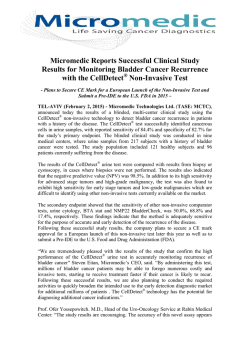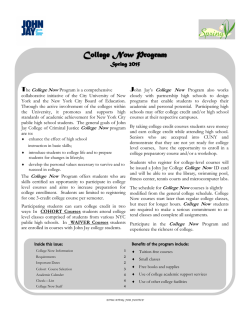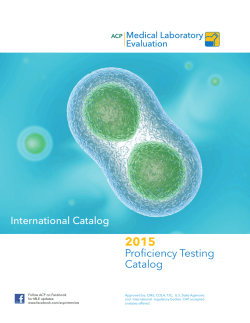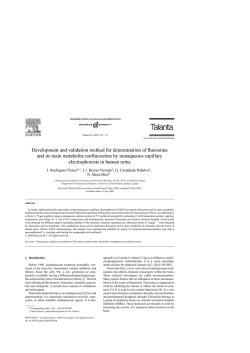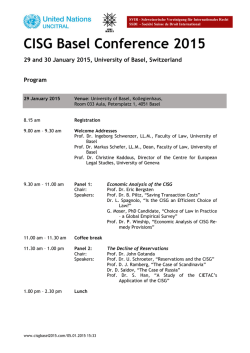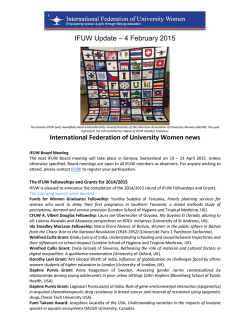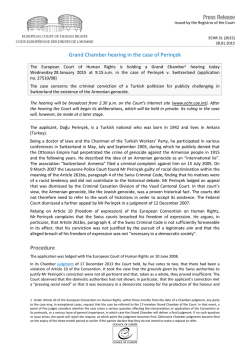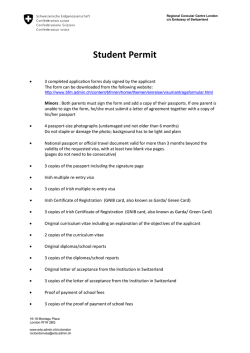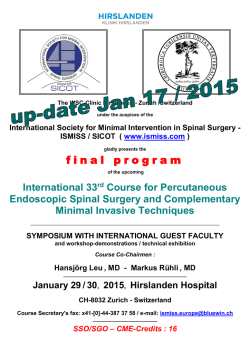
1-s2.0-S1569905614604504-main
456 Combination of matrix-assisted laser desorption/ionization time of flight (MALDI-TOF) and UX2000 urine flow-cytometry for rapid detection and identification of urinary tract pathogens Eur Urol Suppl 2014;13;e456 Print! Print! Bonkat G.1 , Müller G.1 , Berini A. 2 , Frei R.2 , Goldenberger D.2 , Regeniter A. 3 , Rieken M. 1 , Braissant O.1 , Gasser T.C.1 , Bachmann A. 1 , Egli A. 2 1 University Hospital Basel, Dept. of Urology, Basel, Switzerland, 2 University Hospital Basel, Dept. of Clinical Microbiology Laboratory, Basel, Switzerland, 3 University Hospital Basel, Dept. of Laboratory Medicine, Basel, Switzerland INTRODUCTION & OBJECTIVES: Rapid and specific diagnosis of urinary tract infection (UTI) is central to early commencement of effective empiric antimicrobial therapy. Conventional urine culture requires up to 72 hours from sample collection to the delivery of pathogen identification. Urine flow-cytometry (UF) offers a fast method to determine the quantity of bacteria and leucocytes. MALDI-TOF, a novel mass-spectrometry based technology, is able to identify bacterial species very rapidly. Combining these technologies may significantly shorten the time to microbiological identification and initiation of adequate antibiotic treatment. MATERIAL & METHODS: We compared UF and MALDI-TOF versus standard and automated culture methods. Urine samples were centrifuged and washed to remove leucocytes and enrich bacteria in a rapid protocol followed by MALDI-TOF. Two clinical settings were initially examined: (cohort I) analysis of randomly selected routine urinary specimens sent to the laboratory; (cohort II) culture positive urine samples with equal or greater than 10e6 bacterial cells per mL urine to specify the assay performance. RESULTS: Cohort I: UF identified in 11 of 32 urine samples significant bacterial loads (≥10e4/mL) and leucocytes (male ≥20/uL and female ≥40/uL), suggesting active infection. Only in 1/11 samples a single bacterial pathogen, Klebsiella pneumoniae, could be identified by both culture and MALDI-TOF. In 3/11 samples no bacterial growth occurred, in 7/11 mixed culture or low bacterial load (≤10e5/mL) was present, which yielded no identification by MALDI-TOF. Cohort II: 13/42 urine samples did not fulfill the UF inclusion criteria. In addition, 12/42 either the bacterial load determined by culture was ≤10e5/mL or multiple microorganisms were present. Nevertheless, MALDI-TOF detected low discriminatory peaks in 6 these 12 samples. Among the remaining 17 samples, in 10 the bacterial species could be successfully determined (MALDI-TOF scores ≥2.0), reflecting an almost 60% early identification success rate. CONCLUSIONS: These preliminary results show that urine samples intended to be directly analyzed by MALDI-TOF mass spectrometry should be pre-selected by UF. In urine samples with significant bacteria and leukocyte counts MALDI-TOF is able to rapidly identify the causative pathogens. Although this method will need further improvement we believe that this approach will lead to targeted adjustment of antibiotic treatment at early stages in the setting of UTI.
© Copyright 2025
